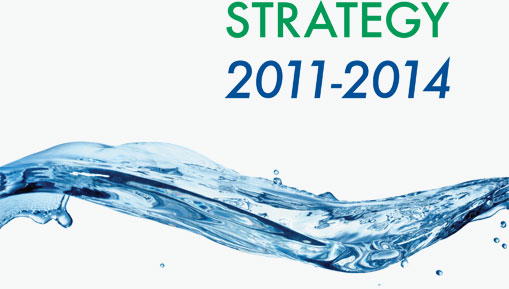 December 31, 2013 CONTACT: Chris Gilbride / Ted Timbers (718) 595-6600 Department of Environmental Protection Releases 2013 Year End Update on Strategic PlanThree Years into Four-Year Plan, 85 of 100 Key Initiatives Have Been Fully AchievedDepartment of Environmental Protection (DEP) Commissioner Carter Strickland today released the 2013 Progress Report on Strategy 2011-2014, which documents significant progress achieved during the three years since the groundbreaking plan was first introduced. Issued in 2011 with Mayor Bloomberg, the plan identified 29 broad goals and 100 distinct initiatives that will help DEP fulfill its mission to protect public health, improve water quality in New York harbor, support economic development, and enhance New Yorkers’ overall quality of life by delivering high quality drinking water, managing stormwater, collecting and treating wastewater, and reducing air, noise, and hazardous materials pollution. Three years into the four year plan, 85 initiatives have been fully achieved, 13 are on track to be completed on schedule, and two have been deferred. The full 2013 Progress Report can be viewed on DEP’s website here. “The Strategic Plan was created to both guide the department in its day to day operations and to allow our customers to hold us accountable,” said Commissioner Strickland. “Thanks to the hard work and dedication of the nearly 6,000 men and women at DEP, we are well on our way towards reaching our goal of becoming the safest, most efficient, cost-effective, and transparent water utility in the nation.” Operations and CapitalDEP manages a comprehensive drinking water collection, delivery, and distribution system that includes 19 reservoirs, nearly 7,000 miles of water mains, tunnels, and aqueducts, 965 water quality monitoring stations, and 109,000 fire hydrants. In addition, the wastewater collection and treatment system includes 7,500 miles of sewers, 148,000 catch basins, 96 pumping stations, and 14 in-city wastewater treatment plants. The Department faced substantial operational challenges this year as it continued to recover from Hurricane Sandy’s record storm surge, which damaged 10 wastewater treatment plants and 42 pumping stations. In October, DEP released the NYC Wastewater Resiliency Plan which included an asset-by-asset analysis and actionable solutions to protect the City’s valuable wastewater infrastructure from the risks associated with climate change and has since released a Request for Proposals for converting the vulnerable Rockaway Wastewater Treatment Plant into a pumping station. DEP’s ability to confront future operational challenges—both planned and unanticipated—is vital to the health, safety, and economic development of New York City and the upstate watersheds. To this end, DEP has one of the largest construction budgets in the region, with $12.4 billion allocated to projects over the next ten years. The Department also continues to enhance its in-house design and construction programs to ensure the delivery of projects on time and on budget. Key 2013 Operations and Capital Milestones:
SustainabilityAs part of its mission, DEP works to reduce air, noise, and hazardous materials pollution in New York City, while also promoting public health, economic development, and quality of life through sustainable environmental policies. The agency has engaged with state and federal regulators to incorporate sustainability principles into clean water regulations, and worked to manage urban stormwater runoff through the innovative NYC Green Infrastructure Plan. In addition, DEP continues to implement strategies to reduce greenhouse gas emissions throughout our facilities and explore cost-effective clean energy projects. DEP has also worked to enhance the 2005 Noise Code and has pursued updates to the city’s Air Code. Key 2013 Sustainability Milestones:
Customer ServiceDEP is committed to providing transparent, high-quality, and efficient service to the 836,000 customers who pay for the water and sewer services that fund the city’s water and wastewater system, the more than nine million people who use our water every day, including the 8.4 million residents in New York City and nearly one million people who live in Westchester, Putnam, Ulster, and Orange counties, and the developers, engineers, construction companies, and plumbers that need DEP permits to continue the city’s growth. Key 2013 Customer Service Milestones:
Worker SafetyThe ambitious goals of Strategy 2011–2014 can only be met if conditions are safe for DEP’s nearly 6,000 employees. This requires continuous training, rigorous compliance oversight, and open communication among DEP staff. Key 2013 Worker Safety Milestones:
DEP manages New York City’s water supply, providing more than one billion gallons of water each day to more than nine million residents, including eight million in New York City. For more information, visit nyc.gov/dep, like us on Facebook at facebook.com/nycwater, or follow us on Twitter at twitter.com/nycwater. | ||